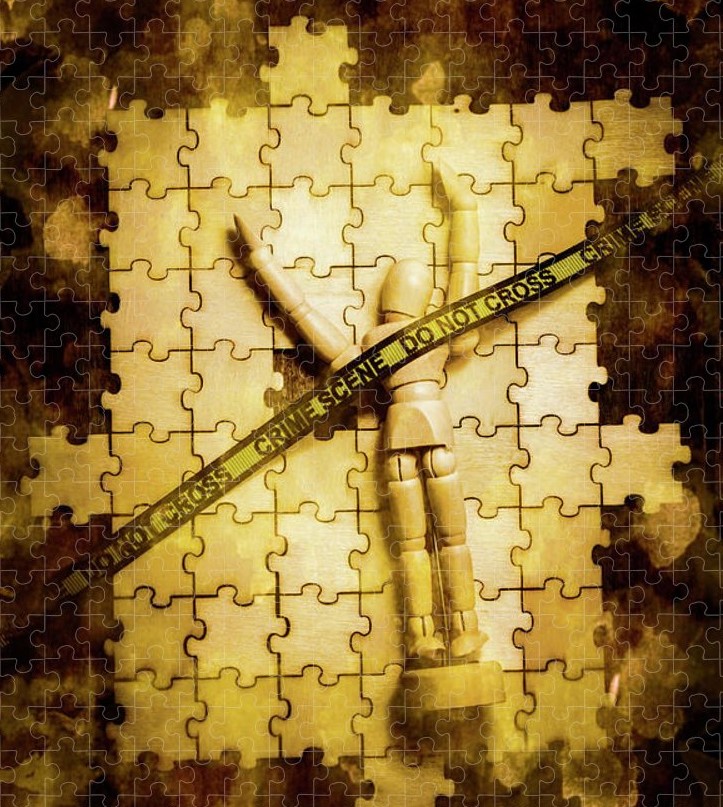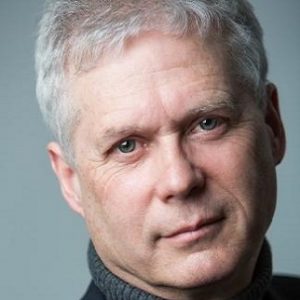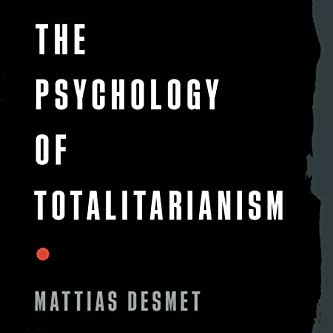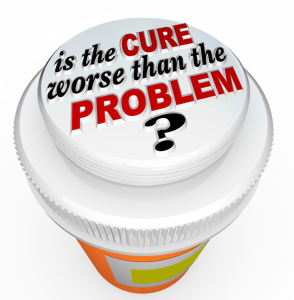Despite all the conflict in the world, it seems that most people have the same basic goals in life. That’s not really surprising given that we operate by the same physiological processes, we have the same psychological abilities, and we live in basically the same environment.
Most of us want freedom, although there are examples in history of people waiting until their freedom was taken before recognizing that it was a vital need. But as a rule, people want the freedom to choose how to live their lives and don’t want others dictating it. That’s why nations and great social movements are often built on concepts of freedom.
We all want health and this includes all the things needed to maintain health including food, water, shelter, and peace of mind. It could also include useful medicines, surgery or health guidance. In Maslow’s hierarchy of needs, physiological and safety needs fall into the larger category of health. Like freedom, health is something we don’t appreciate until it’s gone.

The instinctual goal to reproduce is within each of us or we wouldn’t be here today. For old folks like me, biological reproduction is no longer a primary goal but our common need to be loved and remembered is, in a sense, a psychological reproductive need. A reproductive goal is about propagation, moving beyond our life.
Achieving these goals requires us to have a good understanding of the environment in which we live and, more so, a good understanding of people. Anyone who desires to remain free and healthy, with or without reproduction, should take advice from the ancient Greeks to “Know Thyself.” Knowing ourselves means understanding life, understanding people, and understanding our environment.
Understanding Life
Living beings have a lot in common. For example, we all have metabolic cycles that produce and consume the chemical compounds that maintain and energize our cells. We all have genetic code that provides the toolbox that our cells use to develop and maintain our bodies. We’re all designed to reproduce and respond to environmental stimuli as well.
It’s actually amazing how similar animals are on a molecular scale. Fish, frogs, sheep, humans, and mice all share basically the same set of genetic tools. The difference is what we do with the tools but there are similarities in development patterns. For instance, cells have an intrinsic ability to organize themselves into a body plan and this ability is ancient and shared by many species.
Geneticist Enrico Coen, in his book Cells to Civilizations, describes seven core principles in the growth of living systems and creative processes.[1] Coen says that these seven principles are demonstrated in all four of life’s greatest transformations: evolution, development, learning, and culture.
Whether it be a gene, a cell, an organism, or a society, each unit of life experiences these seven principles as it evolves, develops, learns, and creates.
Coen’s first three principles, 1. population variation, 2. hereditary persistence, and 3. reinforcement simply state that there are differences between individuals that persist over generations and that are selected for by the current environment. Most of us understand that.
4. Competition
Competition is a result of the fact that more than one “difference” is present at any time and the ones that best fit the current environment will persist. Survival of the fittest may be the most misunderstood concept in evolution as many people typically equate fitness with strength and that is not what it means to be fit for the environment. In fact, the weakest could be the best fit in many situations but in general the winner at any given time is the one that exhibits a set of differences that mirrors the environment well, maximizing the number of variables that are optimally fit.
Evolutonary biologist Andreas Wagner, in his book Life Finds a Way, describes the means by which molecules, genotypes, and organisms evolve within their respective environments by traversing their respective fitness (or adaptive) landscapes.[2] There’s a good deal of randomness involved—it’s not all about competition.
Finding the most stable combination of attributes in a complex landscape is a function of both natural selection and the availability of genes due to random chance, a concept known as genetic drift. Wagner applies these concepts to creativity and innovation as well, with divergent thinking (drift) used to generate ideas balanced by convergent thinking (selection) to isolate solutions.
Of course, competition is seen throughout human society in academics, business, government and geopolitical frameworks. Some people embrace competition so much that they never make it to the next principle, which is where the “we” comes in. This includes those of us with anti-social personality disorders like psychopaths—people with no empathy and trouble regulating self-esteem as described by Ramani Durvasula.[3] Psychopaths don’t care about what happens to others. They just can’t get to “we.”
5. Cooperation
Nonetheless, individuals often work together for their mutual benefit. I know, crazy. People cooperate by forming families, friendships, communities, businesses and nations, some of which become venues for competition.
In some circles the question of whether cooperation is a better life strategy than competition is discussed. This leads to the misunderstanding that we can have one without the other. As Coen puts it, cooperation emerges as an outcome of evolution and persists in a feedback loop with competition. It’s not one or the other, we will live through both repeatedly.
Some people still get stuck in the process at cooperation. They might be saints, idealists or victims.
6. Combinatorial richness
The cyclic principles of variation, competition and cooperation have led to some beautiful results in evolution. For example, some animals have extended their senses into the environment so that minute movements of air, water, light, and electrical or chemical content can be detected far from the source. Sometimes they get signals that we do not, like the infrasonic signals used by whales and elephants, or the fine temporal structure of bird song. All in the pursuit of freedom, health, and reproduction.
Adaptation can take a lot of time though. Plants are unable to learn new relationships in a lifetime (e.g. grass does not learn to duck down when a lawn mower is started) but animals can. Being able to learn new relationships depends on the added complexity of an elaborate nervous system.
7. Recurrence
Recurrence is the relentless repetition of this overall process. As we get better at adapting there is more competition and more need for variation so we have to go back to the first principle, the development of new differences, and this leads again to the emphasis on individuals and the loss of “we.” Some might naively try to emphasize or remain at a stage of competition or cooperation but we’re a product of the process and we’re best served by imitating it.
Understanding People
Because we have an elaborate nervous system that brings about consciousness and psychology, the most important facts unique to humanity are psychological. In terms of achieving our goals, understanding the state of our psychology is most useful.
Who we are psychologically begins with the unconscious. As most people know, we understand things unconsciously as well as consciously. What many people forget is that our unconscious mind, which is not accessible to us, drives a lot of our decision making.[4] It’s estimated that 95% of our mental, and therefore emotional and physical, activities operate unconsciously. This fact brings to mind a question: How much of what we strive for in life, including freedom and health, is a consequence of unconscious instinctual drives, as in the case of biological reproduction?
An important part of understanding human nature today is deception. That is, we are often deceived and we deceive ourselves. I’ve written about the well-documented psychological biases and defense mechanisms that affect people and about how our species evolved a tendency to self-deceive.[5]
Carl Jung described how we deceive ourselves and others through development of our persona. This is the self-image we display for public consumption that is not an accurate representation of who we are, leaving out the negative aspects of our personality.
The challenge we face today is that the falsehoods resulting from our tendencies to deceive each other and ourselves are amplified by the many blind spots brought about through propaganda and censorship. Nonetheless, better knowing ourselves can help us to respond to threats that abuse our psychological limitations.
Understanding Our Environment
Despite how important it is to be aware of our current environment, it’s not easy to keep up with the change. As Coen wrote, “Our environment is a rich setting, involving many different types of correlated change.” In support of our goals of freedom, health and reproduction, let’s focus on dangers in our current environment.
- Byron Tau’s new book Means of Control details how we are being tracked in many ways and how our data, which defines a pattern of who we are, is for sale.[6] Tau explains how the justifications that led to this startling fact arose from what we’ve been told about the 9/11 crimes.
To those who are engaged in tracking us, people have become data patterns. Through our credit card usage, store loyalty cards, apps that we give GPS access to, and ongoing geolocation of our devices and vehicles, our individual histories and preferences are readily available for exploitation. Today this data is sold to aggregators and collectors including but not limited to military and intelligence agencies around the world.
It doesn’t need to be said that military and intelligence agencies don’t have a great track record of caring about humans and neither do large corporations. Of course, from the perspective of these kinds of entities, a good track record has nothing to do with supporting freedom, health, democracy or any other typically human goal. For them it’s about wealth and power and, as Tau wrote, the success of mass surveillance “lies in the secrecy.”
Tau emphasizes a quote from novelist Thomas Pynchon. “Once the technical means of control have reached a certain size, a certain degree of being connected one to another, the chances for freedom are over for good.” The technical means of control are being put in place today.
- There are those who would harm us for their own objectives. This includes people who just don’t care about others and people who have agendas that involve our submission to them.
The people who would harm us include a wide variety of deceivers—scammers who steal billions annually, thieving politicians and government contractors, and various people who sell us lies in the form of misinformation or disinformation that persuade us to do things we would not do of our own accord.
People with severe psychopathy would harm us physically, mentally, and emotionally in order to achieve their own objectives. Due to their underdeveloped amygdala, which normally regulates fear and social behaviors, they not only don’t care if they harm others—they want to harm others. Unfortunately, people with psychopathy are estimated to account for about 1% of the human population. The odds that some of them are in positions of authority are good.
- Power is concentrating at an exponential rate and it doesn’t matter if this is happening through intent. The result is the same–the concentration and centralization of power in the hands of a few.
The great danger here is that once such power is concentrated, anyone could take it. Power corrupts and absolute power corrupts absolutely. We need to be ready for that, to whatever extent we can, while remembering that a majority of people will obey authority to the point of harming others.[7]
As the U.S.-Western empire declines and the process of globalization leads to a world government, let’s not kid ourselves. The only ideology of the current empire is the accumulation of wealth and power and that won’t change by replacing our overlords with those of a different nationality. No doubt we can expect that new empires will take a shot at controlling everything until there is just one. Then the only enemy left to target will be the people.
As always, the question remains, what can we do?
The thinking that led to this essay suggests a few things we can do and some we should not do. To begin with, we should use the 5% of our thinking that is conscious to help us achieve our common goals. We should not assume that the institutions we have developed for cooperation–academics, business, government, media–have the same goals because, despite some court rulings, they are not human beings. They might also have become arenas of unhealthy competition.
We should continually be striving to understand ourselves and our environment and never accept simplistic narratives that present a new threat from which our institutions will claim to save us. The dangers we face are not about a political party or a political leaning, and they are not about specific governments or corporations. They are more related to the extensive deception in our lives.
We should use critical thinking to recognize the dangers and opportunities in our environment. At the very least this should include being highly skeptical of every narrative presented by government, non-democratic global governance organizations, and the mainstream press. Especially the fear-based narratives.
We should innovate and create using a balance of divergent and convergent thinking. Creativity is born of a broad perspective that allows for comparisons and metaphors. Therefore, we should ask, what happens when we see these kinds of dangers in nature or in history? Are there strategies that have been successful for other species or cultures?
That’s a lot to consider but it presents a perspective that needs to be developed and suggests ideas for further research.
References:
- Enrico Coen, Cells to Civilizations: The Principles of Change That Shape Life, Princeton University Press, 2012
- Andreas Wagner, Life Finds a Way: What Evolution Teaches Us About Creativity, Basic Books, 2019
- Psychopath or Sociopath: What You Need to Know, Interview with Ramani Durvasula, Med Circle, https://www.youtube.com/watch?v=gpjYtAB9i2w
- Timothy D. Wilson, Strangers to Ourselves: Discovering the Adaptive Unconscious, Belknap Harvard, 2002
- Kevin Ryan, Blowback, Managed Blowback and Self-deception, 2011, https://digwithin.net/2011/03/05/self-deception-blowback-and-managed-blowback/ , Terrorism and the Evolution of Deception, 2014, https://digwithin.net/2014/12/06/terrorism-deception/
- Byron Tau, Means of Control: How the Hidden Alliance of Tech and Government is Creating a New American Surveillance State, Crown Publishing, 2024
- Stanley Milgram, Obedience to Authority: An Experimental View, Harper Collins, 1974








